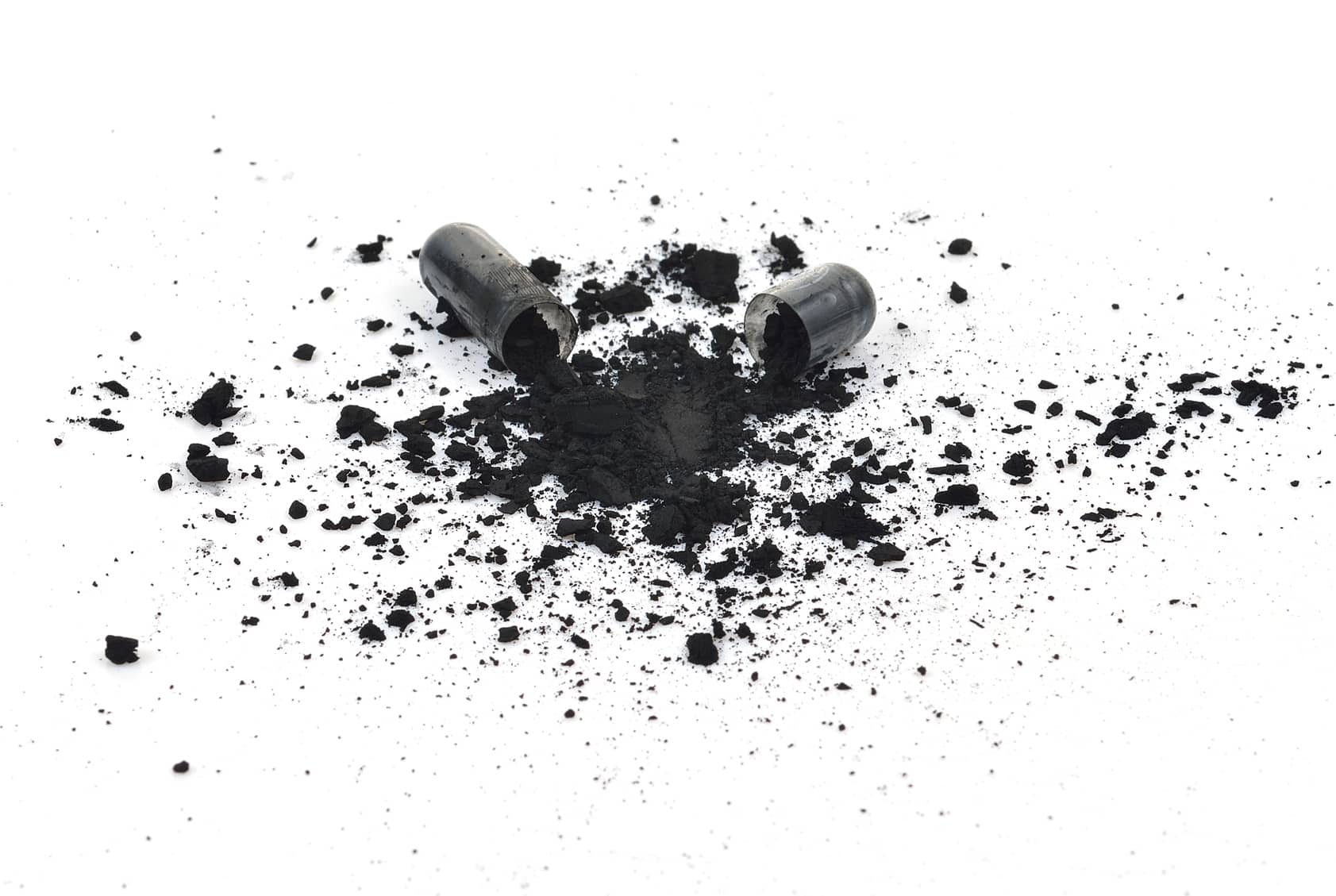Activated carbon

Activated carbon recently has become an insider tip for numerous beauty products. Though it seems to be something unusual, it actually includes a lot of benefits.
Activated carbon may not be confused with usual charcoal or barbecue coal. Vegetable charcoal as well as peat, brown coal, hard coal, olive pits, coconut shells, or bamboo can be used as raw materials. The manufacturing process for cosmetic charcoal is very elaborate. Activated carbon consists of nearly 90 percent of carbon and has an extremely porous structure, similar to a sponge. Bamboo charcoal for cosmetic purposes is becoming increasingly important. It is a by-product of bamboo in the extraction of bamboo vinegar. Bamboo charcoal with its very large-pored surface contains all the valuable ingredients of bamboo that remain preserved in the production process for the most part. It is indicative of the positive properties that the substance is an approved food additive (E 153).
Bamboo charcoal and vegetable charcoal in cosmetics
Cosmetic charcoal obtained from vegetable charcoal is a common ingredient in masks, peelings, deodorants, and many more products. Bamboo charcoal and activated carbon are powerful absorbents and ideal for thorough skin cleansing. Charcoal, like a magnet, attracts environmental pollutants, sebum residues, dirt, and bacteria making it easy to remove harmful substances from skin’s surface.
It works according to a similar principle in facial masks, peelings, products for impure skin and blemishes, and deodorants. Charcoal / Activated carbon now is used also in dental hygiene products. The micro-particles are extremely fine and able to rub off discolorations from teeth as carefully and gently as possible. Beauty products with cosmetic charcoal are very kind to skin. Until now, there are no known side effects or unfavourable indications. As experience has shown, allergies are extremely rare.
Warning: That applies only to external use! Particularly activated carbon should be used only sparingly because it absorbs minerals, vitamins, and other essential substances together with body fluids. Moreover, it has to be taken into consideration that especially peelings with charcoal are not imperishable for an unlimited period; they can turn rancid.
The life cycle assessment of charcoal / activated carbon is excellent.
In Asia, it is an appreciated soap ingredient. The soap cleanses skin gently and carefully, while smoothing it with moisturizing substances like rice milk and coconut oil.
Conclusion: A virtually flawless talent
Charcoal is a rising star in modern cosmetics. That is to be welcomed. Charcoal, activated carbon, or bamboo charcoal, they all impress with their numerous great qualities, and again and again have proven their effectiveness. They can be used without prejudice. Beauty-conscious customers can trust products with charcoal / activated carbon without hesitation. The only prerequisite is that the product does not contain any harmful or chemical additives; otherwise, skin-friendliness cannot be guarantee. To summarize: Charcoal is a valuable gain for cosmetics.
Facts to know about activated carbon
After production, the charcoal must be activated. Two activation procedures can be used. In the gas activation, coked material is exposed to a gas stream of steam, carbon dioxide, air, or mixes of them at 700-1000°C. The charcoal burns partially and leaves a highly porous, highly active carbon skeleton.
In the chemical activation, the not charred material is mixed with dehydrated and oxidized chemicals. The mash is heated to 400-800°C. The activation material is zinc chloride, sulphuric acid, or phosphoric acid, which are completely recovered.
Use of activated carbon
Activated carbon is used in medicine, food industry, chemical industry, and water and sewage treatment. Everyone daily comes into contact with products purified by activated carbon.
- Purification and decolorization of paraffins, enzymes, glycerines, waxes, organic acids
- Decolorization and deodorization of gelatin
- Purification and decolorization of sugar solutions, starch products, cooking oils, and edible fats
- Decolorization of soup seasonings and glutamate
- Purification and deodorization of fruit juices, fruit extracts, wines, beers
How does activated carbon work?
Charcoal adsorbs molecules. The term adsorption means the physical adhesion to the surface of a substance. Thanks to its vast surface of 500-1500 m2/g, activated carbon is able to adsorb enormous quantities of substances. The procedure functions by attraction on the molecular level, the so-called Van-der-Waals forces. Activated carbon is the adsorbent and the adsorbing agent is the adsorptive. Being a purely physical process, the adsorption is reversible.
The adsorption of activated carbon is the more effective the higher
- the molecular weight
- the number of functional groups (double bonds, halogens)
- the polarity of the molecule.
That is also the reason why undesired by-products or colorants are easy to eliminate with activated carbon. It is perfect for thorough purification.
Ingredient nomenclature
Charcoal is declared as CI 77266 or Black Carbon.